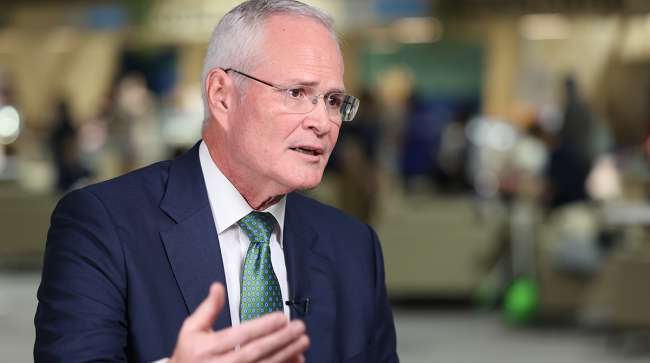Unlocking Longer-Lasting EV Batteries: Exxon’s New Graphite
Electric vehicles (EVs) could soon hit longer ranges with quicker charges, all thanks to a fresh breakthrough in graphite by Exxon Mobil. This revolutionary carbon molecule, designed for battery anodes, reportedly extends EV battery life by up to 30%. Such advancements not only represent a leap in battery tech but could also have intriguing ripple effects across logistics and freight transport worldwide.
The Game-Changing Graphite Molecule
At a recent energy symposium, Exxon’s CEO Darren Woods revealed that the company developed a synthetic graphite capable of significantly enhancing battery lifespan. Unlike ordinary graphite, this new form enables faster charging times, improves the battery’s range, and empowers EVs with a sturdier lifespan. Several electric vehicle makers are already putting this invention through its paces in real-world conditions.
Key features of this synthetic graphite include:
- 30% longer battery life
- Faster charging capabilities
- Extended driving ranges for EVs
Scaling Up Production: What’s Next?
Exxon isn’t just sitting on this invention – the company acquired assets from Superior Graphite, which is expected to bolster production capacity. The goal is to have commercial-scale manufacturing ready by 2029, setting the stage for widespread adoption. However, it’s important to note that Exxon aims not to produce batteries themselves but to supply crucial battery materials by leveraging their existing refineries, chemistry plants, and labs.
Strategic Moves in Battery Materials
- Using established refinery and chemical facilities for material production
- Extraction plans underway for lithium, a major battery ingredient
- Focusing on transforming carbon molecules, with no direct involvement in wind or solar technologies
From Oil Giant to Energy Transition Player
Exxon has a long-standing footprint in battery innovation. It’s the pioneer behind the lithium-ion battery concept of the 1970s and developed the first rechargeable battery’s plastic film back in 1991. Over the decades, the company has contributed materials critical for battery components, highlighting a strategic pivot toward energy transition markets.
Challenges in the Hydrogen Frontier
While moving forward in battery materials, Exxon’s ambitions in the low-carbon hydrogen space face hurdles. The company recently flagged possible delays in a hydrogen and ammonia project in Baytown, Texas, citing tepid customer interest. Tightened timeframes on hydrogen tax credits also add pressure on the market’s growth potential. CEO Woods emphasized that this industry must be underpinned by sound market forces rather than relying solely on subsidies.
Implicații pentru logistică și transport
Advances in EV battery technology, such as Exxon’s breakthrough graphite, carry profound implications for the logistics sector. Longer battery life and faster recharging directly translate to reduced downtime for electric delivery vehicles, enabling more efficient routes and increased cargo capacity utilization. This evolution supports the wider adoption of electric trucks and vans, key players in environmentally friendly freight, parcel, and bulky goods transportation.
| Aspect | Potențial impact asupra logisticii |
|---|---|
| Battery Longevity Increase | Fewer battery replacements and maintenance; longer intervals between vehicle downtime |
| Faster Charging | Shorter wait times at charging stations, enhancing fleet productivity and delivery speed |
| Extended Driving Range | Expanded ability for long-haul routes, reducing reliance on fossil fuels |
Broadening the EV Logistics Landscape
For freight and cargo delivery, including bulky shipments and relocation services, these battery improvements could tip the scales. Operators could optimize fleet deployment logistics, relying more confidently on electric vehicles that match or exceed combustion engines in reliability and efficiency. The evolution invites new opportunities for sustainable transport, reducing environmental impact while streamlining operations.
The Bottom Line on Exxon’s Battery Material Innovation
The new synthetic graphite from Exxon Mobil promises to push the boundaries of EV battery performance – a topic that resonates far beyond the automotive world. The potential to enhance electric fleet operations, from cargo vans to heavy-duty freight transport, is a big deal in the logistics realm. While donning the hat of a materials supplier, Exxon’s footprint in energy transition technologies mirrors broader shifts toward carbon-conscious transport solutions.
Of course, no amount of glowing reviews or industry praise can replace hands-on experience. Fortunately, platforms like GetTransport.com empower users to tap into efficient, affordable cargo transport solutions globally. Whether it’s moving office equipment, shipping pallets of goods, or relocating bulky items, the platform’s transparency and broad network make planning your logistics hassle-free and budget-friendly. For anyone assessing new transport technologies or adjusting logistics strategies, GetTransport.com offers the tools to make smart, reliable choices – with competitive pricing and a global reach. Book your ride and discover the ease of smooth freight management at GetTransport.com.
Looking Ahead: What It Means for Global Logistics
Exxon’s advances in battery materials may not disrupt global logistics overnight. The commercial rollout in 2029 and the scale of adoption will take time to unfold. Still, staying ahead of such innovations is crucial. Energy-efficient, longer-lasting EV technologies align well with the logistics industry’s growing push for green solutions and operational efficiency. For this reason, maintaining awareness of these strides palpably supports forward-looking freight, haulage, and courier strategies worldwide.
Începeți să vă planificați următoarea livrare și asigurați-vă încărcătura cu GetTransport.com.
Rezumat
Exxon Mobil’s synthetic graphite innovation aims to significantly boost electric vehicle batteries’ life by roughly 30%, promising faster charging and extended driving ranges. While Exxon focuses on supplying materials rather than building batteries, this leap is a nod toward reshaping transport electrification. For the logistics field—handling everything from international shipping to house moves and bulky freight—the evolution heralds more reliable, eco-friendly fleet possibilities.
At the intersection of battery breakthroughs and cargo transport, platforms like GetTransport.com provide flexible, affordable logistics solutions, helping customers worldwide handle shipments with confidence. By combining industry insight with practical transport services, the platform exemplifies how innovation in energy and freight sectors coalesce to simplify moving goods—globally and efficiently.

 How Exxon’s New Graphite Innovation Could Revolutionize Electric Vehicle Batteries and Impact Global Cargo Transport">
How Exxon’s New Graphite Innovation Could Revolutionize Electric Vehicle Batteries and Impact Global Cargo Transport">